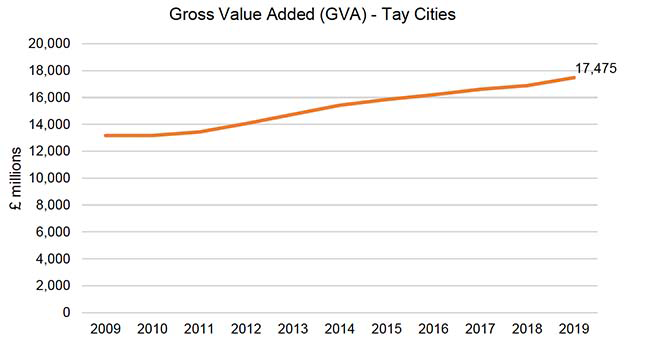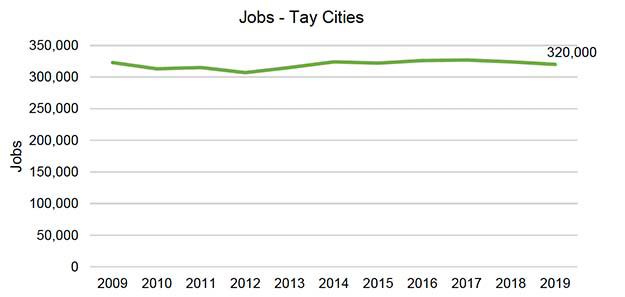Scotland National Strategy for Economic Transformation: Regional Economic Partnerships - evidence
This Paper provides summary evidence received from Scotland's Regional Economic Partnerships as part of the National Strategy for Economic Transformation engagement process.
8. Tay Cities Regional Deal


Regional Aspirations to 2030
The Tay Cities Regional Economic Strategy (2019-2039) has an overarching ambition to increase the number of businesses and to create more, better-paid jobs across the Tay Cities Region in order to improve access to opportunity and to increase the distribution of wealth and wellbeing within the region. Key targets to 2029 include:
- increasing the regional employment rate to above the Scottish average;
- increasing the 5-year business survival rate to above 50%; and,
- reducing the percentage of jobs in the region that pay less than the Living Wage.
Regional Opportunities
The region employs around 100,000 people across Scotland's key sectors and has a diverse business base. This puts the region in a strong position to fully capitalise on current and future economic opportunities. There are particularly significant opportunities in:
- energy transition and clean growth;
- international investment;
- advanced manufacturing;
- transport;
- research and innovation; and
- building a life sciences cluster and healthcare.
Regional Challenges
The region's key challenges include:
- low productivity in parts of the region. Investment is needed to deliver the skills and entrepreneurship required to transform the economy;.
- increasing costs of doing business (such as energy, construction and material costs) is beginning to hold back recovery from the pandemic. This is keenly felt in the Tay Cities Region, where there are labour challenges and distance from markets is a key issue.
- lack of infrastructure to facilitate growth, which is critical to retaining and expanding businesses in key sectors;
- investment to realise potential linked to net zero faces significant risks; and,
- skills shortages to deliver the net zero potential, and the ability of the labour market to meet economic demands risks some sectors and communities being left behind in the move towards net zero.
Ongoing and Planned Activity for Region
The Tay Cities Regional Deal is a major investment in the regional economy, and includes key projects that will support the region's growth sectors. Projects include: Growing the Biomedical Cluster, Tourism Culture & Investment Programme, cyberQuarter, Advanced Plant Growth Centre, International Barley Hub and Advanced Manufacturing Programme. There are other initiatives to support the region which are in place or being developed, including:
- Michelin Scotland Innovation Parc to support net zero and the move to renewables/clean growth in the manufacturing sector;
- Forth & Tay Offshore Cluster focusing on growing the offshore energy supply chain in East Scotland;
- Regional Tourism Strategy;
- Tayside Engineering Partnership, which draws together expertise in the engineering sector, and;
- Perth Food & Drink Park which is a £7.6m development supporting the food and drink sector in the region.
Contact
Email: Cornilius.Chikwama@gov.scot
There is a problem
Thanks for your feedback